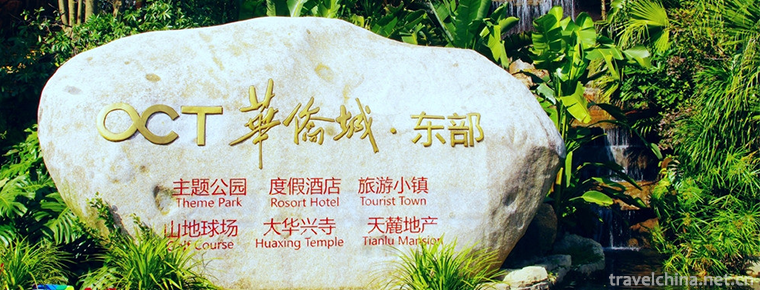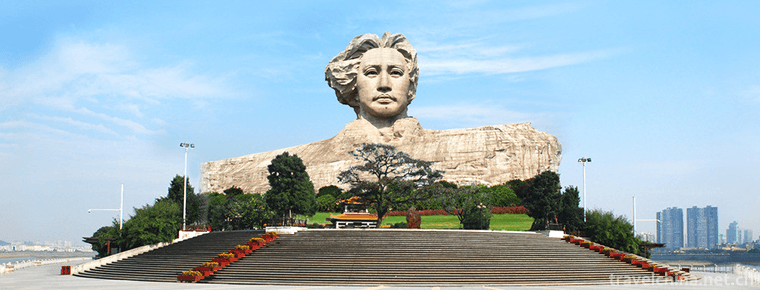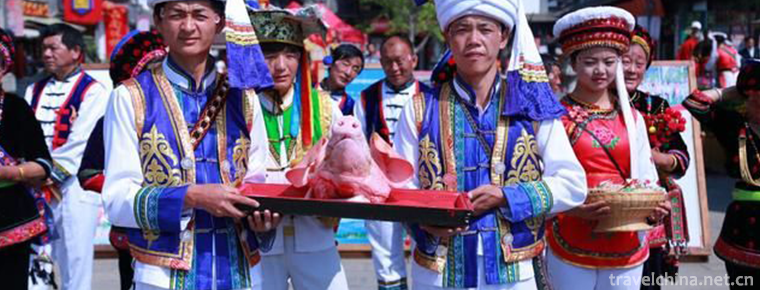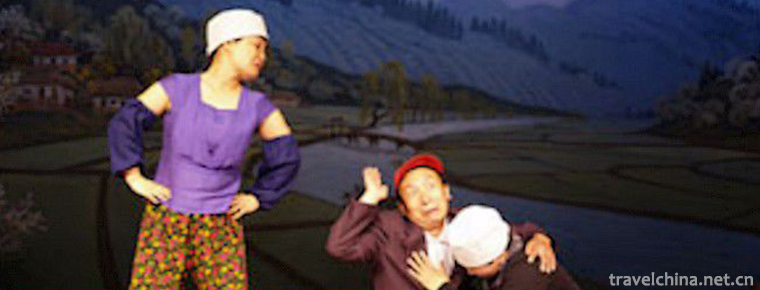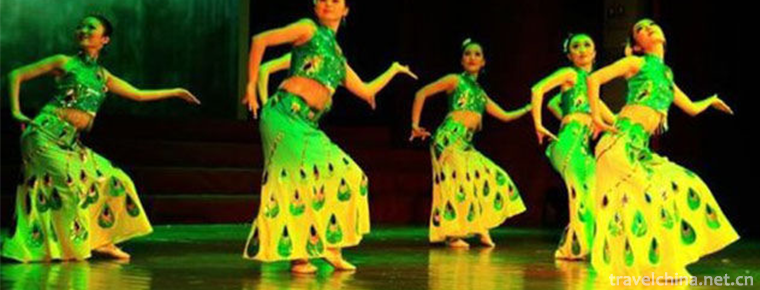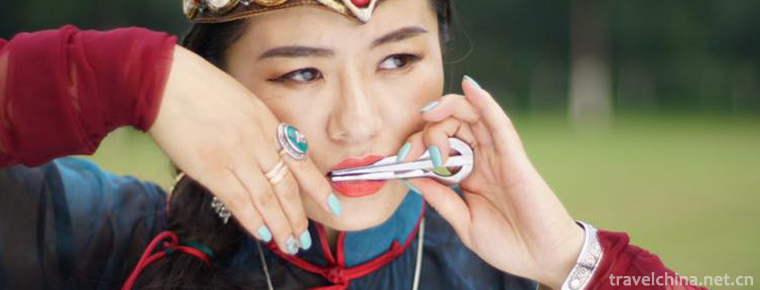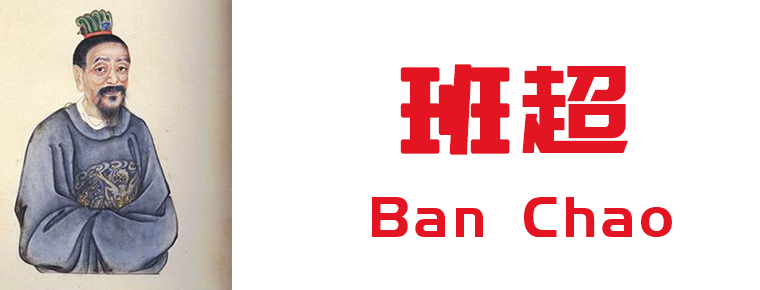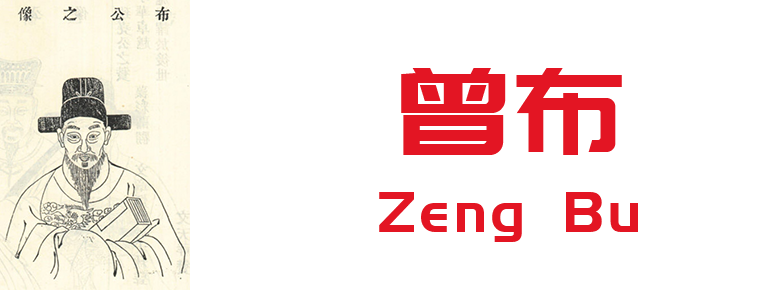Wo Lou dance
Wo Lou dance
Helou Dance is a traditional folk entertainment program in Yunan County, Guangdong Province. It is called "living fossil" in traditional dance. Helou Dance is the product of ancient farming culture in Yunfu City. It originated from the myth and legend of Shennong clan in the Central Plains, and mainly spread in Liantan Town, Yunan County, Nanjiang River Basin. The dance is a kind of dance in ancient times by Baiyue Wuhu people (ancestors of Zhuang nationality) to celebrate harvest and pray for good weather and good harvest. The development of He Lou Dance has a long history and rich cultural connotation. It has high research and aesthetic value in Chinese culture.
On June 7, 2008, the Helou Dance declared by Yunan County of Guangdong Province was listed in the second batch of national intangible cultural heritage list with the approval of the State Council.
historical origin
The birthplace of Helou Dance is the place where the ancient native people lived in Lingnan. These nationalities were called Jing Man or Man Yi in the Xia and Shang Dynasties, and Yue, Yangyue and Nanyue in the Zhou Dynasty. During the Spring and Autumn Period, the King of Chuwei thrived in battle and defeated the Yue and Wu. A part of Yue people dispersed to Lingnan and differentiated into many branches. From this time on, a new term "Baiyue" appeared in the literature. In the Qin and Han Dynasties, there were appellations of Minyue, Nanyue, Xiou, Luoyue and Dongou. In the Three Kingdoms Period, there were more appellations, such as Shanyue, Shanyi and Wuhu.
Ancient Vietnamese ancestors lived mostly in mountains and deep forests and bamboos. In the biography of Xu Yanjinwang and Jia Zhuan, the father of Yan Zhuwuqiu in the Han Dynasty, there is a saying: "The more non-Guoyi is located in the valleys, among bamboos", "with deep forest bamboo, stone strikes down the waterway, there are many snakes and beasts in the forest." This is the case with the beach, the birthplace of Helou Dance. Until the Ming Dynasty, there were still dense forests and silted fallen leaves. The river was full of pestilence. Those who drank by mistake would be poisoned, and those who were seriously poisoned would be in a state of crazy jumping. Because of the bad living environment and the low level of scientific knowledge, the ancient Yue people could only rely on praying for gods, while the tribal chiefs played the role of wizard as well as ruler. Witch, "Shuowen Jiezi" has a saying: "Zhu Ye. Female competence is invisible, so are those who dance to the gods." Wizards generally claim that they can communicate with gods and ghosts. They are intermediaries between people and gods and ghosts. The main means of witchcraft is dancing, that is, dancing gods. Yu in Tangyu period was a great sorcerer at that time. He was regarded as the patriarch by the ancient Chinese sorcerers and was called "Shenyu". Xia Yubu also invented a new dance step which can connect the gods, named "Yubu". Because of the lofty status of witchcraft, witchcraft prevailed, and witchcraft further promoted the prosperity of ancient songs and dances. Mr. Wang Guowei once said, "The prosperity of singing and dancing begins with witchcraft?" "The God of witchcraft must sing and dance." The dancers wear masks, black skirts, bamboo hats, scarves and hemp shoes. The "patriarch" in red robes wears a lotus crown, a yellow shawl in red, a tin rod in his left hand, and a copper bell with ribbons in his right hand. The bell sounds serve as a deterrent and a call to the people of the clan.
According to scholars'textual research, the Helou dance originated from the Yue Wuhu people living in the Nanjiang River Valley in the Han Dynasty. Through the Nanjiang River, the main artery of communication in the Han, Jin, Sui and Tang Dynasties, it passed over the low mountain boundaries to Gaozhou, Huazhou, Taishan, Yangjiang, Yunan and other places. It is the product of the combination of the evolution of primitive witch culture and Nuo culture. The Helou dance in Yunan was introduced from Hunan by Yao people in the Tang Dynasty. Yu Nan He Lou Ancient Dance won the Silver Prize in 2002 when it participated in the first Guangdong Folk Art Festival Performance Competition. It was called "living fossil" in the national dance by experts. On January 24, 2008, the Ministry of Culture announced the completion of the "second batch of national intangible cultural heritage list recommendation projects", Yu Nan County's "Helou Gu Dance" list is on the list, becoming one of the five recommended projects selected in the second batch of national intangible cultural heritage list in Guangdong Province.
Ancient times
Nuo dance originated from totem belief in ancient clan society. It was originally a primitive sacrificial dance of ancient Chinese ancestors. It is a kind of Chinese folk dance with the function of exorcising ghosts and epidemics and offering sacrifices, which is widely spread throughout the country. It is usually performed during the first to sixteenth lunar month. "Zhou Li Xiaguan Sima" contains: "Fang Xiangshi, palm covered with bear skin, four eyes of gold, Xuanyi Zhuyi, Goyang Shield, Shuai Baili is sometimes difficult (with the"Nuo"), to fight epidemic in the rope room. Great mourning, first coffin; and tombs, into the pond, to fight four corners, beating Fang Liang. Dancers wear the image of fierce mask, dressed as the legendary "Fang Xiangshi", a hand Ge, a hand shield, while dancing "Nuo, Nuo..." They shouted, ran to every corner, jumped, kicked, and searched for ominous things, in order to dispel the pestilent ghosts and pray for a year's peace. Nuo highlights the value of human survival in the early stage, especially in the extremely harsh natural environment to obtain the minimum living conditions and expand their own living space.
The early purpose of Nuo Dance was to drive out ghosts and epidemics, pray for human reproduction, pray for a bumper harvest in agriculture, and later developed into praying for blessings, wealth, Naji and other content. From the performance of Helou Dance, its main function conforms to the early purpose of Nuo Dance, that is, to pray for the New Year. He Lou Dance is usually held in the countryside. After the autumn harvest, the stage is set up. The wizard dances and sings on the stage. The lyrics are He Lou Tune. The whole set of songs and dances consists of thirteen sections, namely, fragrance tuning, invitation to God, fan tuning, bell tuning, grass building, flag tuning, flower tuning, dressing, shade tuning (umbrella), godsend, upstairs, rain tuning, and grain pouring. Dancers should dance in all directions of southeast, northwest, and north-west, while setting their feet and singing Wolou tune: "Up to the terrace to dance Wolou, wind and rain to celebrate the harvest". This kind of Wolou adjusts rhyme and is easy to remember. In the dancers'eyes, it is the mantra and prayers for communicating with ghosts and gods to express the good wishes of the ancestors.
He Lou Dance is an art form accumulated over a long period of time, which has been used for reference, sublimated and developed from many aspects. Its music and dance are similar to Getian's music in ancient times. "Lushi Spring and Autumn Gule Paper" records the music and dance of the Getian tribe in ancient times: "The music of the Getian tribe in the past, three people play oxtail, enough to sing eight songs: one is Zaimin, two is Xuanbi, three is Sui Cao Mu, four is Fengwugu, five is Jingtian Chang, six is Dadigong, seven is Yidide, eight is the pole of the total animals". Obviously, Sui Cao Mu, Fen Wu Gu and Jing Tian Chang in Batian express the ancients'mentality of attaching importance to farming activities and praying for gods to help each other. The birth of Helou Dance may also be in this period.
Qin Dynasty
With the development of civilization, the contacts among the ancient nationalities in Lingnan were increasing and their strength was strengthened. By the Spring and Autumn Period and the Warring States Period, the Vietnamese had posed certain threats to the Chu and Qin kingdoms at that time. After the founding of Qin Dynasty, in order to safeguard the imperial power and unify the world, the First Emperor could not wait to determine Baiyue. "Guoqin Lun" has a saying: "To the first emperor... The emperor of Baiyue was appointed to serve as an official by beating and whipping the world, invigorating all over the world and taking Baiyue as Guilin and Xiangjun in the south.
Geographically, the central part of the Xijiang River Basin belonged to the Xiou State at that time. After the Qin Dynasty settled down Baiyue, some of the Xiou people merged into the Han people, and those who did not merge became exiled because of the failure of the uprising in the Eastern Han Dynasty. The history of their survivors was called "Wuhu Man", and the Wuhu people were one of the ancestors of the Zhuang nationality. The Wuhu people inherited the ancient Helou dance better.
The dancer's dress of Helou Dance is black, which is in line with the characteristics of heavy black clothes of Qin Dynasty. "History of the First Emperor of Qin Dynasty" has a saying: "The first emperor pushed the beginning of the biography of the Five Virtues, thinking that Zhou Dehuode, the Qin Dynasty Zhou De, is invincible. At the beginning of the water virtue and the new year, the congratulations of the emperor began in October. Clothes are black on every flag.
From Three Kingdoms to Tang Dynasty
From the Three Kingdoms to the Tang Dynasty, these people were called "bureaucrats". The "bureaucrats" had more opportunities to absorb the Han culture and further develop the "Helou Dance". The national name of "Da" did not appear until the Southern Song Dynasty. Li Zengbo in the late Southern Song Dynasty mentioned that there was "Da Ding" in Yishan in Lizong's "memorial" in the last Song Dynasty.
During the Wanli period of the Ming Dynasty, when Zhang Yuanxun, the general soldier of Guangdong Province, led the army to successfully suppress the Yao people in Sanluo area, the Han people moved here one after another, and the Helou dance received the culture of the Han people and spread steadily.
Inheritance value
In the development of He Lou Dance, it has experienced the process from fear of God to worship god, from entertaining God to entertaining people, from mythology to artistry, during which various Chinese myths and legends, folk rap and singing are constantly absorbed, which greatly enriches the content of Nuo sacrifice, especially the "humanization" of God among them, and makes the entertaining ingredients continuously strengthened.
Primitive belief: cattle worship
Ancient Lingnan area belonged to the uncivilized area. The ancient Yue people mainly lived by planting rice, but because of the backward production tools and technology, the yield has been very low. By contrast, because of the use of cattle in the Central Plains region, the yield of grain crops is naturally much higher. After Qin Shihuang unified Lingnan, the people of Central Plains moved to the south in large numbers, bringing in the advanced production technology and culture of Central Plains as well as farming cattle. In the Book of History, Qin Shihuang's Book of History, there is a saying: "In the past thirty-three years, all the people who have died have been sent to death, and their son-in-law and Jia people have taken the land of Lu Liang slightly, which is suitable for Guilin, Xiangjun and Nanhai. The emergence of cattle led to a bumper crop harvest, and cattle were regarded as gods by the local minorities. But after the fall of the Qin Dynasty, the Han Dynasty quickly banned the importation of cattle. "In order to prohibit the gold and iron, farm implements, horses, cattle, sheep and livestock in South Vietnam Guan City, the Secretary ordered and bounded" (The Five Main Biographies of South Vietnam)
The prohibition of cattle import has aroused the local people's belief and worship of cattle farming, which is naturally reflected in the dance of cereal floor. The belief in cattle can be found everywhere in the dance of He Lou. For example, the "patriarch" in a red robe holds a tin rod with his left hand. This tin rod represents a sacred and inviolable authority. For example, people of all nationalities should dance Thanksgiving in the simple and vigorous tone of ox horn, which represents a kind of leadership and directs the whole Nuo dance sacrifice. The popular Spring Bull Dance in Luoding area reflects the concept of worship of farming cattle as well as the Helou Dance.
Evolution of Civilization: Hero Worship
The specific creators of He Lou Dance can not be verified, but those who contribute to the prosperity and prosperity of the nation and benefit the region will naturally be grateful, remembering and extolling their merits in various ways. Myth is a better way. The evolution of civilization has made the original worship of cattle hide in the dance as an implicit symbol. Instead, it is the birth of a hypothetical female hero who saves the people of Li. She is Madame Hehua. She was loved as a hero for saving the people of Li, and as a dominant symbol, she was shown in the dance. For example, Zhang Yuanxun mentioned earlier is like this. He was recited as a hero in his lifetime and was worshipped as a God after his death. Of course, besides Zhang Gongmiao, there was Wenguang Temple in memory of Yang Wenguang, the famous pioneer of Pingnan in the Northern Song Dynasty. The incense and incense were also everlasting for thousands of years. It also reflects a concept of heroism.
Wild and wild: Helou dance with a romantic mood has a unique singing voice and strong rhythm. It can fluctuate with the dancer's emotional changes. It is graceful and lively, rhymes fluently, and melodies vividly and pleasantly. It has a strong flavor of life and local characteristics. He Lou dancers wear masks, head caps, footwear hemp shoes, wear black clothes, a minority costume, holding torches around the fire also singing and dancing, while the viewers around the warm fire in the river beach bamboo forest to watch, in the ancient and melodious notes, intoxicated and unable to pull themselves out.
The masks of Helou dancers are mostly funny, simple and naive. They are not based on realistic models. This free and arbitrary entertainment and funny aesthetic pursuit are obviously inherently unified. The symbolic beauty it expresses embodies the spirit of Nanjiang people in the long and arduous historical development process, and attracts the centripetal force of the people's psychology, so as to form the unity, unity and unity of the group. Order, to enhance the group's struggle for survival, it is the symbol of Nanjiang people's group consciousness, full of a kind of romantic feelings.
Inheritance status
In order to protect the project well, Yunfu City listed the "Helou Dance" as the first batch of municipal intangible cultural heritage protection lists in 2007. In June of the same year, it was approved by the provincial government as the second batch of provincial intangible cultural heritage protection projects.
Every year on January 20th, the Helou Dance is popular in Liantan Town, Yunan County. Villagers watch the bamboo forest along the river beach, surrounded by warm fires. Dancers wear masks, cockscombs on their heads, hemp shoes on their feet, and black clothes. They sing and dance around the fire with torches in the evening. In the simple and melodious music, the "patriarch" dressed in red robes holds a tin stick on his left and a copper bell on his right. At the call of the bell, all the clans appear in turn, go through the fire gate, worship the "patriarch", raise the rice ears over his head with both hands to celebrate the bumper harvest and pray for heaven's blessing again. Dancers dance lightly, shout loudly, a school of scenes of harvest celebration, the lyrics also say: "Up the stairs to dance in the Hetao Tower, wind and rain Shunqing harvest, Yao Hu Xin Song Taiping Shi, the earrings chant the golden autumn."
Related reports
Not long ago, Fu Zhikun, the inheritor of the national non-heritage culture "Helou Dance", came to Guangzhou to attend the second Lingnan Folk Culture Festival.
At the Cultural Festival, Fu Zhikun, 66, personally beats wooden drums, and more than a dozen dancers dance with the sound of wooden drums and gongs. The lead dancers covered their faces with masks, wore lotus corollas, wore yellow square robes with red shoulders, a copper bell with ribbons, a tin stick shaped like a bull's head, and the other dancers also wore masks, black dresses and bamboo hats. Male dancers hold torches while female dancers hold grain ears. While singing the song of Wolou, they are waving, shaking hands and treading feet, dancing to the southeast, northwest and all directions.
The rustic and primitive totem dance movements aroused applause from the audience. The applause gave Fu Zhikun infinite power and reminded him of the arduous road of the "revival" of the Helou dance.
Fu Zhikun said that "Helou Dance" is a dance to celebrate the harvest and worship the gods. It mainly spreads around Liantan Town, Yunfu Yunan County, Guangdong Province. It has a history of more than 2300 years. However, during the Cultural Revolution, the dance of He Lou disappeared as a feudal superstition, which made Fu Zhikun feel extremely disappointed.
Before retirement, Fu Zhikun was a doctor in the Second People's Hospital of Yunan County. His greatest hobby was to study folk art in Liantan Town of Yunan County. Fu Zhikun told Zhongxin. com that when he was young, he often took his mother's clothes to the village to watch the old artists dance the Helou dance.
"Decades have passed, and I still remember the breathtaking drums, the campfires reflecting the red sky, and the mysterious songs. He Lou Dance should not just fade out of people's sight, it is a part of traditional Chinese folk culture, we have the responsibility to sort it out and pass it on to future generations. In 1996, Fu Zhikun began to visit the rare artists who had participated in the dance performance of He Lou.
Fu Zhikun said that in the early days of liberation, people in the villages often organized people to dance the Helou Dance. Old artists like Zeng Zhixiang, who once danced the Helou Dance, are still alive today. "My family inquired, and later found Zeng Zhixiang, Hu Quan, Qiu Laojiu, Yang Zhinan, these veteran artists, to ask them about the dance movements, rhythm and lyrics of the He Lou dance, relying on their memory and historical records, gradually restored the general appearance of the He Lou dance."
At the Fifth Liantan Folk Art Festival in 1996, the dance of He Lou, which had disappeared for decades, came out of the rivers and lakes again and made a sensation in the local area. However, Fu Zhikun is still not happy. The performers of He Lou Dance are older and their culture is lower. How to inherit it in later generations has become a problem.
"I went to the cultural department in the county, and I said I wanted to keep the cereal floor dance. Finally, I saw whether the dolls would like to learn it or not. Later, the town's secondary schools began to hold folk art training classes, specializing in teaching students to dance the Helou Dance, which attracted many students to learn, and I slowly put down my suspense. Fu Zhikun said that the youngest dancers are a group of children who are still in kindergarten.
Although the dances of young people are no longer ancient-the masks used to be made of bamboo shoot shells have been replaced by cardboard nowadays; the formulas used to include perfume, invitation to god, fans, bells, and grass-making buildings are more than a dozen, but now they are adapted artistic performances; "But as long as the dance of the grass-roots is `unborn'instead of `bone-changing', and the traditional foundation remains unchanged, I am satisfied with it. " Fu Zhikun said with a laugh.

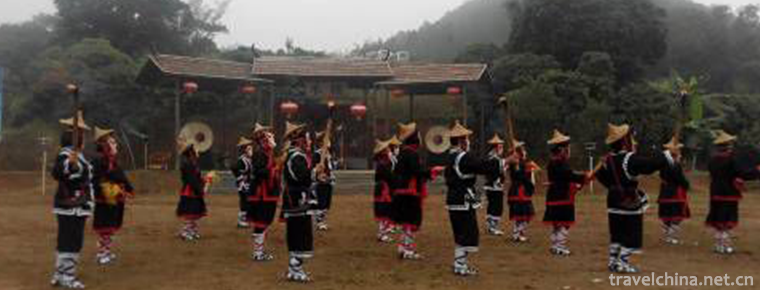
-
The Oriental Pearl Radio & TV Tower
The Oriental Pearl Radio and Television Tower is one of the landmark cultural landscapes in Shanghai. It is located in Lujiazui, Pudong New Area, with a height of 468 meters.
Views: 608 Time 2018-12-05 -
Shenzhen Overseas Chinese Town Tourist Resort
Shenzhen Overseas Chinese Town, located in the Rhododendron Hill of Shenzhen Overseas Chinese Town, is the latest generation of large theme parks built by the Overseas Chinese Town after the splendid .
Views: 135 Time 2018-12-12 -
Yuelu Mountain and Orange Prefecture Tourist Area
Orange Island Scenic Area is located in the heart of the Xiangjiang River opposite Changsha City, Hunan Province. It is the largest famous island in the Xiangjiang River with an area of 91.4 hectares.
Views: 184 Time 2018-12-12 -
Chinese Sun Valley
Located in the development zone of Dezhou, Sun Valley of China is the largest base of research, development, testing, production, education and tourism of renewable energy in the world..
Views: 124 Time 2019-01-18 -
Qinghai Tibet Plateau Wildlife Park
Xining Wildlife Park, also known as the Qinghai-Tibet Plateau Wildlife Park, is the only large-scale comprehensive wildlife park in the Qinghai-Tibet Plateau with the highest elevation.
Views: 181 Time 2019-02-07 -
Bai people circle three spirits
Bai people around Sanling, a traditional festival in Dali Bai Autonomous Prefecture, Yunnan Province, is one of the national intangible cultural heritage..
Views: 229 Time 2019-04-03 -
Three Old People of Korean Nationality
Three Koreans are the traditional folk opera form of the Korean nationality in China. It is composed of three actors who perform in the role of the elderly and merge the forms of Korean opera singing.
Views: 357 Time 2019-04-16 -
Peacock Dance of Dai Nationality
Dai peacock dance is the most famous traditional performing dance in Dai folk dance in China. It is spread in Ruili, Luxi, Xishuangbanna, Mengding, Mengda, Jinggu, Cangyuan.
Views: 207 Time 2019-04-24 -
Chord music
The mouth string is also known as the sounding strip, the strip spring and the mouth spring. It is a small musical instrument which is deeply loved by the minority compatriots. The content of playing .
Views: 213 Time 2019-05-10 -
suzhou pingtan
Suzhou Pingtan is the general name of Suzhou Pingtan and Suzhou Pingtan Ci. It is a traditional form of opera and opera that uses Wu dialect to speak and perform freely. It came into being and became .
Views: 72 Time 2019-06-17 -
Ban Chao
Ban Chao (32 - 102 years), the word Zhong Sheng. Fufeng County Ping Lingxian County (now) Shaanxi People in Northeast Xianyang. Eastern Han Dynasty Famous time Militarist Diplomats, historian Ban Bi T.
Views: 224 Time 2019-09-06 -
Zeng Bu
Zeng bu (November 3, 1036 - August 21, 1107), Zi Zi Xuan, Tai Chang, son of Yi Zeng, brother Zeng Gong of Zhong Shu Shu, the Prime Minister of the Northern Song Dynasty, and the important supporter of.
Views: 143 Time 2019-09-15

